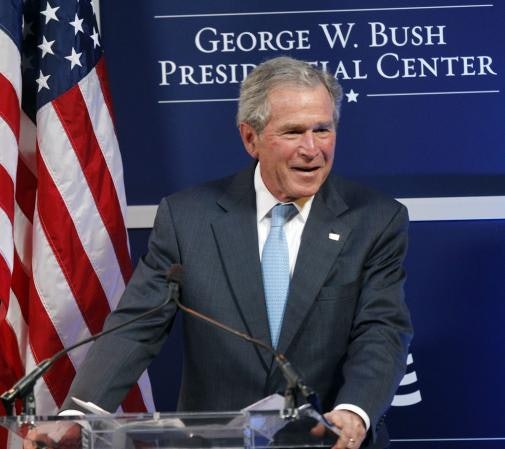In the spring of 2011, the United States faces several economic challenges. But this is not a time for despair. Higher economic growth can overcome obstacles that seem daunting. While many economists foresee long-term GDP growth of just 2 percent a year, the Bush Institute, rooted in a strong belief in the power of free markets, seeks ways to double that rate.
The challenges are evident. The federal debt is moving to levels not seen since World War II. Unemployment rates remain high, with eight million fewer Americans working than just three years ago. One in seven mortgage debtors are on the way to foreclosure, and $12 trillion in household net worth has been wiped out since 2008. Gold prices have hit all-time highs above $1,400 per ounce.
History provides insight. One hundred years ago Argentina, a country blessed with abundant natural resources, was one of the wealthiest countries in the world, on a par with Britain, France and the United States. Today, Argentina’s per capita GDP is one-fifth that of the United States, and two-thirds that of Ecuador. A core lesson from Argentina’s long-term decline is that policy matters
Our mission at the Bush Institute is to spur research and develop initiatives that will help accelerate America’s economic growth. This conference launches the 4% Project, which will increase awareness of public policies and private business strategies that increase opportunity and prosperity for Americans.
The conference sets for the United States a goal of long-term, sustainable, real GDP growth of 4 percent or more. While 4 percent annualized GDP growth might seem a stretch, it can be achieved. The United States grew at that rate during much of the 19th century, and the rate during the second half of the 20th century was only slightly lower.
With modern information and industrial technologies, as well as deep capital investment in productivity tools across the economy in every industry, the United States can grow much faster than economists currently predict – as long as the best policies are in place.
What are those policies? Nobel laureates and other leading economists, CEOs and policy experts have been invited to participate in discussions April 12 and 13 to begin the process of seeking answers to that question.
The stakes are high. In 2010, U.S. GDP was $14.6 trillion. At a 4 percent growth rate, GDP would reach $26.5 trillion in 2025. But at a growth rate of 2.4 percent, GDP would reach only $21 trillion – a 25 percent gap in wealth in just 15 years!
Strong growth will create a virtuous circle by lowering expected debt – and thus lowering the drag on the economy that excessive debt causes. Growth will also reduce unemployment and go a long way toward resolving the challenges of weakened retirement systems. America’s best days are ahead, but only if we can find a blueprint for increasing economic growth.
Event Video

